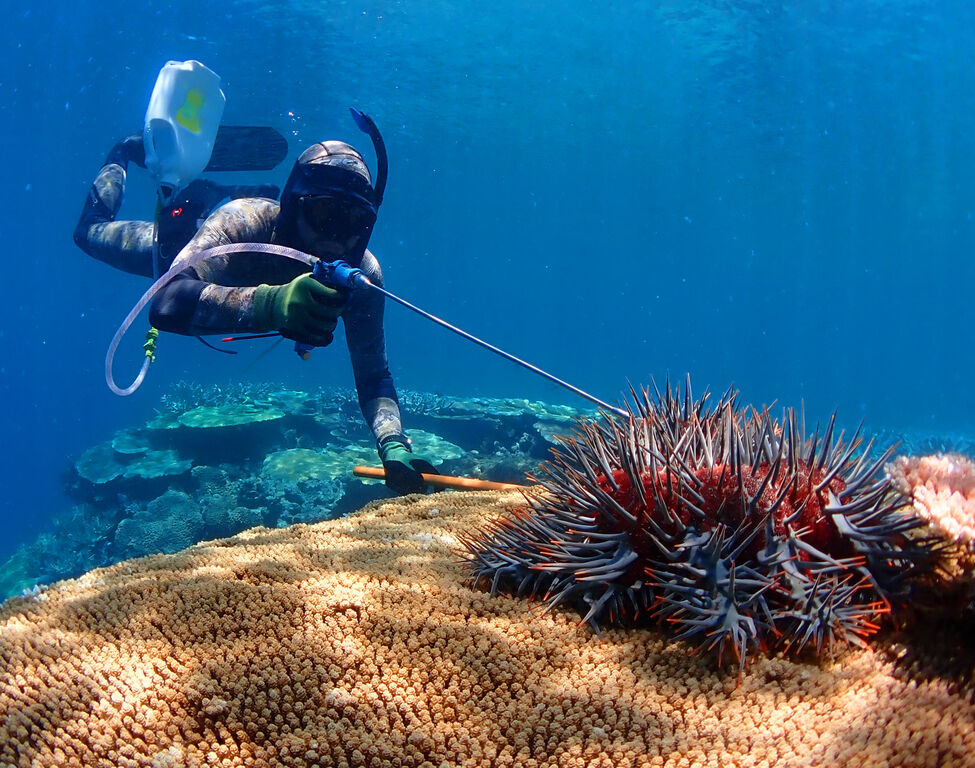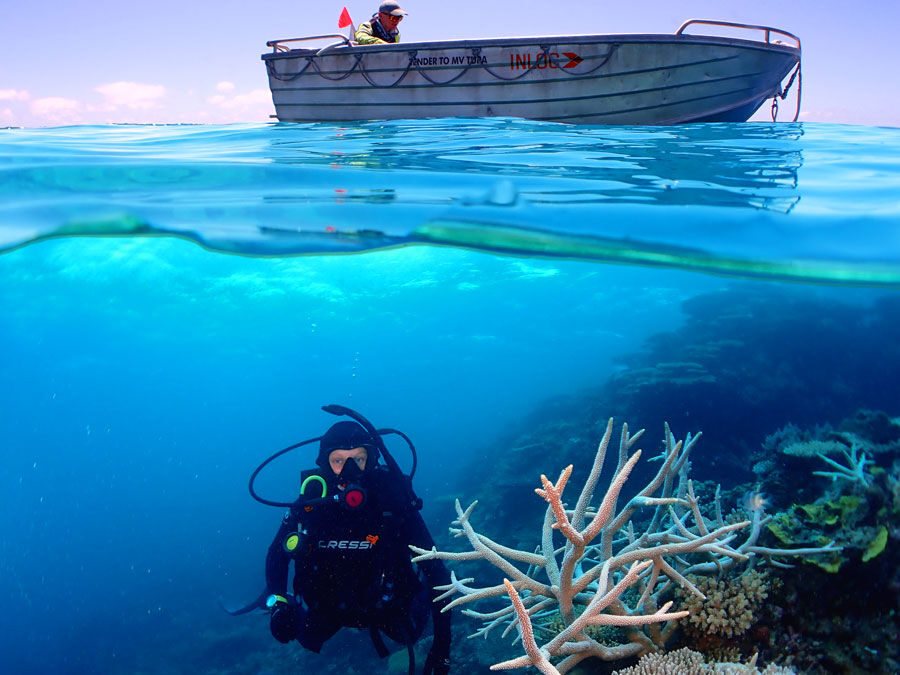
##MP##
Labor has followed through with an election promise to tackle a coral-eating pest on the Great Barrier Reef.
It’s announced $162-million in funding over the next eight years for the Great Barrier Reef Marine Park Authority (GBRMPA) to manage the Crown of Thorns Starfish (COTS) Control Program.
The culling initiative is delivered locally by the Reef and Rainforest Research Centre (RRRC) which partners with Indigenous training organisation INLOC to send divers into the depths armed with lethal injections of bile salts.
##BA##
A previous funding arrangement provided by the Morrison Government delivered $26.6-million between July 2020 and July 2022.
Labor’s commitment equates to just over $20-million per year.
“This will be funding over the next eight years to make sure there are about six to seven vessels out there at all times monitoring the Great Barrier Reef, culling COT starfish and securing the future of the Great Barrier Reef through coral recovery and resilience,” said Special Envoy for the Great Barrier Reef, Nita Green.
“It's really exciting that this is the first time we'll see secure, long-term funding for the COTS program.”

GBRMPA’s David Williamson said almost 150 people are directly employed on the program between the tip of Cape York and the southern end of the Capricorn Bunker reefs.
He said COTS are responsible for about 30 to 40 per cent of total coral loss across the Marine Park.
“We're protecting coral across a very large area and it's incredibly cost effective when you look at the per hectare breakdown,” he said.
##PQ##
“So it's employing people, it's relatively cheap, we can target it strategically, we can deploy it over vast spatial scale.
“It's creating real outcomes and it's buying us a little bit of time in terms of coral protection until the earth and humanity can switch our course around and actually address global emissions.”

Sheriden Morris from the Reef and Rainforest Research Centre said James Cook University’s discovery that ox bile could be used as an organic, single shot lethal substance was a game changer, leading to the development of specialised hunting techniques.
“Crown of thorns are amazing – you can cut them in half and they regrow, you end up with two crown of thorns, you can cut legs off and they regrow … you can't even starve them to death,” she said.
“They are an amazingly tough creature, so finding that ox bile actually kills them without harming the corals was a really successful breakthrough.
“They're cunning, they're smart, and so we have had to actually develop good techniques to actually find them.
##PQ2##
“Nothing gives me greater delight for all the people who said it couldn't work to show that it is actually working.”
Even though more than a million COTS have been culled since the program began in 2012, the Reef is currently in the grip of an outbreak – the fourth on record.
Marine Park tourism industry representatives, Traditional Owners and research groups such as universities and the Australian Institute of Marine Science are consulting partners.
Main points
- $162-million has been committed to the Crown of Thorns Starfish Control Program
- The funding runs out in 2030, equating to just over $20-million/year
- Seven vessels and around 150 people are involved in the culling of the coral-eating pests on the Great Barrier Reef








